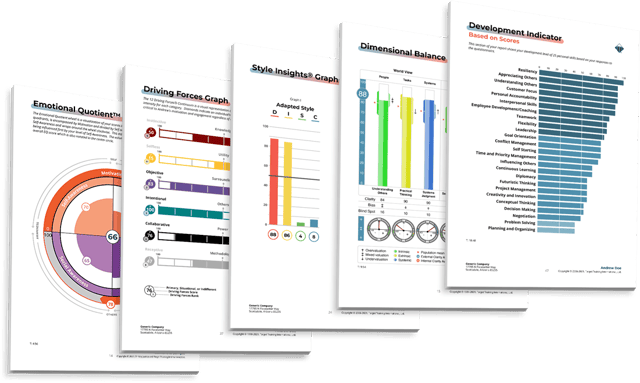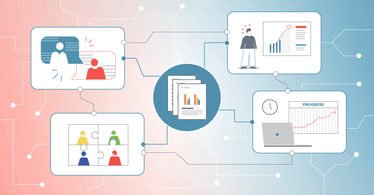How Can Assessments Help Boost Remote Employee Engagement?
As teams return to the workplace and readjust expectations and engagement, leaders might be wondering about how they can boost remote employee engagement.
According to Finances Online, 80% of global corporations in 2020 shifted to remote and hybrid teams due to the COVID-19 pandemic. Not only that, but 64% of organizations say that this shift to virtual team work will likely be a permanent one.
Another thing to consider: Prudential conducted a survey in March 2021 that revealed one in four American workers will look for a new job after the pandemic ends; additionally one in three workers doesn't want to work for an employer that requires them to be fully in-office, all the time.
This means a new war for talent is impending, and your organization needs to be prepared. How can you adapt your employee engagement strategies today to prepare for the future?
What Does Employee Engagement Look Like?
Employee engagement is, put simply, the investment that employees make in their work. Engagement affects productivity, communication, and the quality of work your team brings to the table.
We've talked a lot about employee engagement in the past. (We even created The Engagement Report to respond to industry needs!) Engagement is the factor that will ultimately make or break your organization at large.
How Can Assessments Help Improve Remote Employee Engagement?
So you know that employee engagement is something that your team needs to take seriously. How do you get started?

A great way forward is to harness the power of assessments. By utilizing scientifically-backed, validated assessments, you can reveal the human potential in your organization.
Here Are a Few Of the Ways Assessments Help Improve Employee Engagement
Improve Communication
When your entire team is able to command a shared vocabulary to describe behavior, motivation, and emotional status, your communication will flourish.
This becomes especially important for remote employee engagement! When communicating becomes reliant on video calls instead of face to face, you need to know how to listen and express yourself.
Invest in Development
People want to work for a company that cares about their advancement, their resume, and their work skills. By investing in assessments and briefs, you can show your team you care about them as people.
Remote employees might feel isolated or cut off from others, especially if you're managing a hybrid team. By taking the time to develop their skills and invest in them as people, you can show that they are a valued part of your organization.
Cultivate Company Culture
By using assessments, you will be able to really hone in on the values and cultural standards that you want to develop in your organization.
We've shared before that more employees quit their job for the opportunity to do more meaningful work than those who quit for a larger paycheck. Give them real reasons to stay!
How Can You Measure Remote Employee Engagement?
There are a few ways to measure employee engagement to ensure accurate and helpful metrics.
Issue an Employee Survey (eNPS)
An eNPS (Employee Net Promoter Score) survey will help you understand the difference between employee engagement and employee satisfaction.
These surveys gather numbered scores from your employees, usually asking, "How likely are you to recommend working here to family or friends?" The resulting average score will give you valuable insight on what to continue doing, and what to reevaluate.
Hold a Town Hall to Ask Directly
One of the most effective ways to get feedback is to ask directly. However, this can be one of the most difficult methods to pull off successfully, especially if your company culture hasn't been direct in the past.
Start off by asking teams to share feedback with their leaders, and then have the leaders share that feedback with the organization at large. Then open it up for questions, comments, and further discussion.
Make sure to reward those who come forward with feedback; if you want to make sure remote employee engagement is high, you need to make sure collaborators are encouraged, not shot down or punished.
What Are Some Other Remote Employee Engagement Strategies?
The little things are just as important as the big things when it comes to remote employee engagement.
Increasing communication and virtual connection can be done with collaboration tools like chat, shared calendars, virtual whiteboards to brainstorm, and even platforms like Pinterest to share ideas and concepts. Building in time for casual conversation through virtual coffee breaks is smart as well.
Make sure to be clear about expectations for everyone, as well. Something that can be challenging for employees working from home is both disconnection and overwork. Remote employees are 13% more productive than their in-person counterparts, according to a Stanford study.
Even though in-person workers appear to be harder at work, that might not be the case. Make sure your leaders explain, re-evaluate, and maintain the same expectations across teams.
This brings us back to assessments. Utilizing assessments with your entire team will create a foundation of shared understanding, align goals, and increase engagement.
Better Engagement, Better Productivity at TTI SI
Understanding and prioritizing remote employee engagement will set your organization up for success, now and in the future. Get your jumpstart with assessments and discover what revealing human potential can do for you.
If you're interested in working with TTI SI, get the information you need to move forward here.

Jaime Faulkner
Jaime believes authenticity and storytelling are the keys to successful marketing. As a graduate from the Hugh Downs School of Human Communication, she loves finding and connecting narratives. When she's not at work, she's psychoanalyzing contestants on The Bachelor, painting, listening to podcasts, or playing tabletop RPGs.





0 Comments